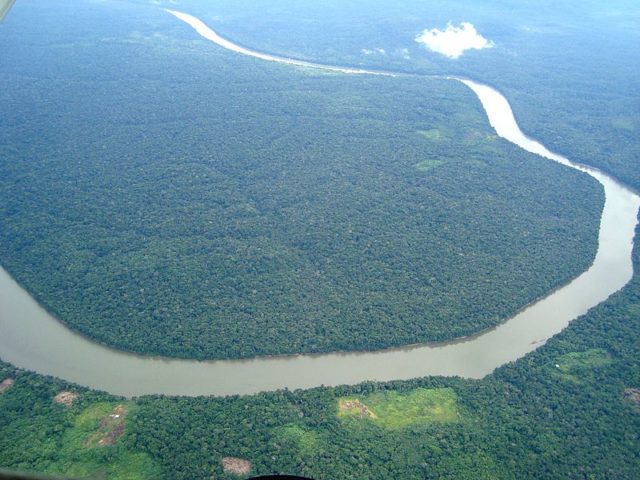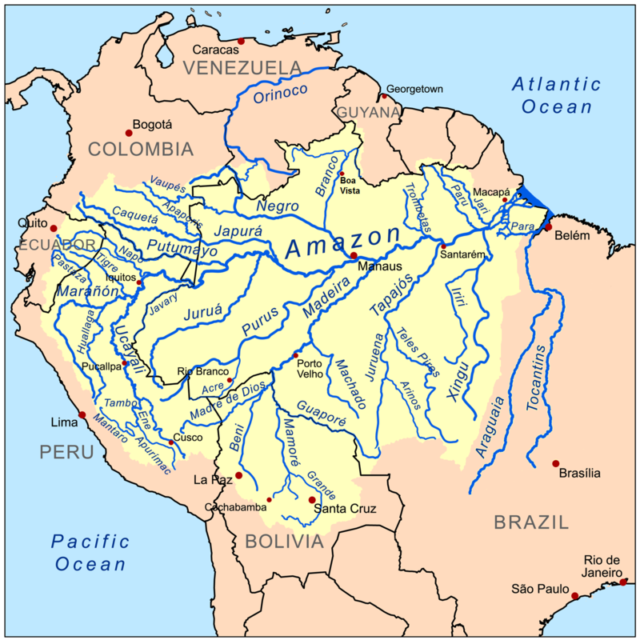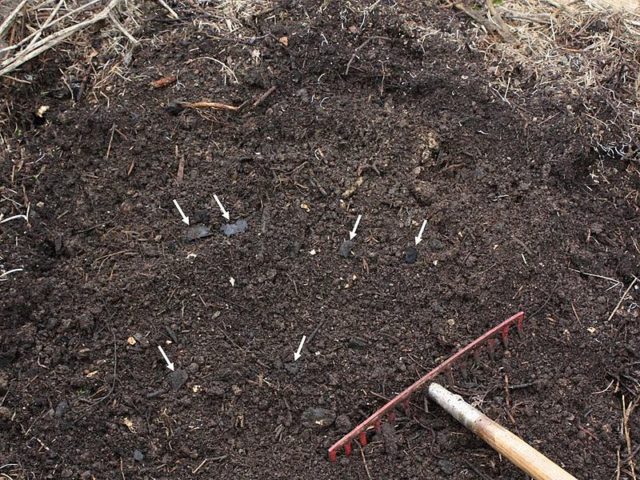Wild, lush, dense, misty untamed jungle. A green canopy enshrouded by a symphony of wild animal calls. This is the romantic imagery associated with the Amazon rainforest. Nobody would think that the Amazon could once have been inhabited by millions of people, but now we know it’s true, even if it shatters the pristine romantic image of the forest that is promoted by environmental lobby groups.
Aboriginal people from “down under” may have been the first inhabitants of the Amazon. New evidence is about to dispel old beliefs about the rainforest. An international research team believes everything we know of the Amazon is a bit off the mark. The research paper states that Aborigines arrived before Europeans; and that Aborigines, not the First Americans, were the first inhabitants of the Amazon.
The Amazon is synonymous with the notion of untouched and pristine wilderness, but new research has thrown the proverbial monkey wrench into the works. Evidence shows that the rainforest was, in fact, home to many millions of farmers and that the rainforest we know and love today is only a few hundred years old. It had previously been populated and cultivated, and these activities have helped shape the rainforest into what it is today.

Evidence points to early aboriginal involvement. Settlers had shaped the rainforest; the only reason mother wilderness could claim her back was the demise of that civilization due to famine, plague, and the European conquest of the region.
Humankind has always been involved in shaping its surroundings; the Amazon rainforest is no exception. Did the Aborigines who roamed the outback in Australia occupy and colonize the Amazon?
There is a case to be made by archaeologists that this in fact so. A genetic study conducted on three tribes in modern-day Brazil has proved their relationship to the Aborigines, more so than any other population group tested.
This genetic evidence is the smoking gun challenging old beliefs about the first inhabitants. One of the first theories to go up in smoke is that all North and South Americans descended from the same tribe; that the First Americans had migrated across a land bridge over the Bering Strait 15,000 years ago. This is now a debunked myth, per this genetic evidence.

The evidence shows that Aborigines may have migrated thousands of years earlier from Australia. This contradicts the First Americans theory as Aborigines crossed the icy plateau to Brazil.
What we are seeing is a different picture emerging of the Amazon; a picture that contrasts with the untouched, secluded Amazon. The research paper suggests that over 83 different species of domesticated plant produce was farmed. The Amazon basin was at the epicenter of crop domestication at the time.
This ties in with discoveries of towns along the river and grave sites – further evidence supported by accounts recorded by early Europeans. One such report was the account by European explorer Gaspar de Carvajal, who visited the Amazon in 1542 and spoke of sprawling towns stretching as far as the eye could see. These kinds of accounts had been discarded before as inaccurate.
Farming in the Amazon started as far back as 3000 BC. By the 1400s the population could have been anywhere from 8 and 50 million. A study of the soil further corroborates this new evidence. The soil is dark, fertile soil synonymous with farming techniques. Further soil evidence shows signs of farm waste mixed into the earth. Other discoveries like land moving equipment have been unearthed, pointing to new theories regarding the civilizations that once roamed the Amazon.

The National Institute of Amazonian Research’s Dr. Charles R. Clement led the study. The historical ecologist has stated in the report, entitled “The Domestication of Amazonia Before European Conquest,” that domestication happens on domesticated landscapes. This includes highly-modified Amazonian dark earth indicative of highly settled areas. The darkened, enriched soil covered 0.1 percent of the soil in the region.
As the population increased in the resource-rich area, food production increased. All these activities had a profound impact upon the ecology of the area.
By 1492 the population may have been around the 8 million mark, based on research conducted on the food production projections. These results are published in their report in “Proceedings of the Royal Society B,” August 7, 2015, Volume 282, issue 1812. The soil was renowned for its fertility and rightly credited for the Amazonian’s rich growth. Amazonian dark earth, or terra preta, is the soil found in the Amazonian basin, and it was created by extensive farming. Human activity has once more shaped an area believed to be inaccessible.
The impact of the report is that it replaces anthropological claims about the Amazon with scientific logic; that the Amazon was domesticated before European conquest. This ties in with sixteenth and seventeenth-century evidence, coupled with discoveries of orchards and groves.
Relying upon archaeological evidence and drawing upon a consensus among historical ecologists, Amazonia is a sophisticated mixed system of human/nature biodiversity, the impact of which refutes the early claims of uniform environmental limitations. It summarizes the extent of the transformation of Amazonia during the Holocene period and states that the rainforest was no more limiting than any other forest elsewhere.
There are many more discoveries, such as suburban towns. Farmers would have grown Brazil nuts, maize, and squash. The Research Institute stated that this is a breakthrough in understanding the past. It provides a longitudinal view into human adaptations to their surroundings. It provides invaluable insight into climate change which could assist us today, Mail Online reported.
Here is another story from us: According to one of Australia’s top politicians, we were invaded.
The Institute makes the point that it is the intrinsic right of the people to know their past – the past that contributed so much to the region. And with this new evidence a brighter future for the Amazon and its inhabitants becomes possible.
